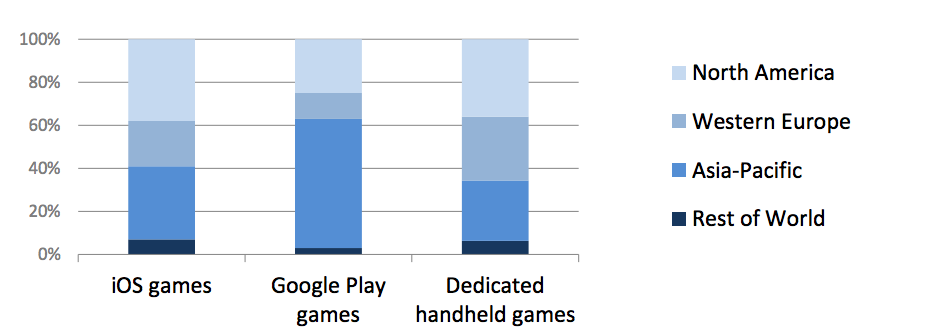Is it game over for Nintendo, Sony and other handheld entertainment companies? That’s the question as a report released Thursday shows consumers spent more on games downloaded from app stores than those designed for dedicated handhelds. Indeed, during the fourth quarter of 2012, more than 20 billion games were downloaded to smartphones and tablets. Perhaps anticipating today’s finding, Sony announced Wednesday its new PlayStation 4 will support used games…
“Combined consumer spending on iOS App Store and Google Play games eclipsed that of dedicated handheld games in Q4,” announced mobile app analytic firm App Annie and hardware research firm IDC.
Indeed, says Josh Hartwell, CEO of Mobile Deluxe, who in an interview with Forbes quipped that “this is the make or break year for the console.”
Per App Annie data, PSP maker Sony and 3DS maker Nintendo shipped around 120 million games during the last quarter of 2012 – 60 percent during December. At the same time, games comprised more than a third of apps downloaded during the three-month period for both Apple and Google Play.
Apple’s App Store had 60 percent of consumer game spending, with the Android store receiving nearly 80 percent of consumer game dollars, according to the report. Unlike the game console makers, the app stores experienced game spending year-round.
While regional spending for dedicated handheld games was evenly distributed among Asia-Pacific, Western Europe and North America, iOS game revenue predominantly came from the Asia-Pacific area and North America.
For Google Play, gamers from Japan and South Korea played a critical role in the Asia-Pacific region accounting for 60 percent of Google Play’s gaming app revenue, according to the report.
While U.S. publishers accounted for two of the top five games at Apple’s iOS App Store, three out of the top five revenue-producing games at Google Play were produced by South Korean publishers. In the case of game titles for dedicated handheld devices, all were produced by Japan-based Nintendo for the company’s Nintendo DS or 3DS.
The growth of game apps can be traced to titles including purchases within free apps, according to App Annie marketing vice president Ollie Lo in an interview with BGR.
These in-app purchases helped boost revenue for both the App Store and Google Play. In Apple’s case, 90 percent of its iOS gaming dollars derived from in-app purchases. For Google Play, free games from South Korea or Japan raked in the revenue through selling add-ons to fans.
We witnessed one outgrowth of game apps overwhelming dedicated game hardware earlier this week. Dedicated gaming firm Sony, upon announcing its new PlayStation 4, grudgingly admitted demand for its titles are slowing.
Talking to a European gaming publication (via BGR), executive Shuhei Yoshida confirmed the console to be launched before the 2013 holidays will play “used games.” But it was a minor concession. In order for the new feature not to cannibalize its base of developers, the PS4 will not play PS3 discs and will instead use streaming technology akin to OnLive to provide backwards compatibility with older titles.
All of which gets us back to the fact games designed for smartphones and tablets are eating the breakfast, lunch and dinner of hardware gaming firms which rely on developers producing software which works only on that device.
You have to wonder if the demise of PCs wasn’t writ large enough for these relics of gaming – and how long they can last in a world where there is an app for everything – including portable entertainment.


